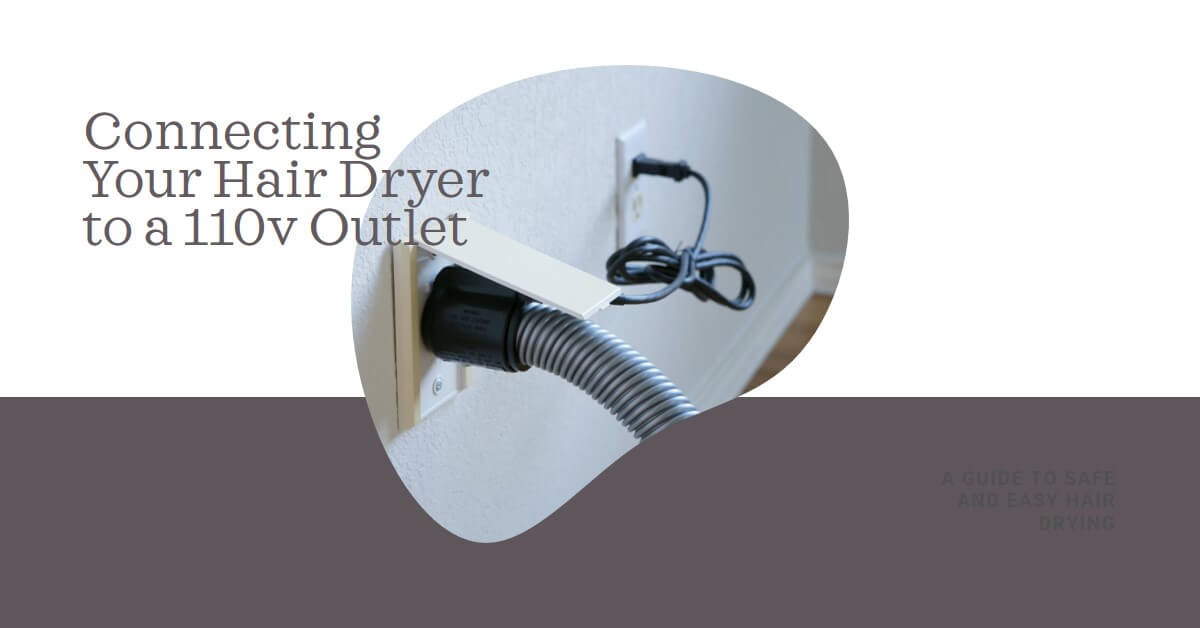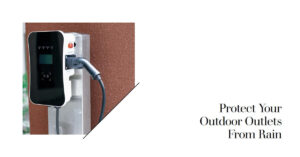Image: “Article Feature Image” by Bing, Source: [Bing Graphic Art].
If you’ve ever traveled to another country or purchased a hair dryer from a different region, you might have encountered the issue of voltage differences.
In the United States, most electrical outlets operate at 110 volts (V), while some hair dryers are designed for 220V.
It’s essential to understand the consequences of connecting a 220V hair dryer to a 110V outlet to ensure your safety and the appliance’s proper functioning. Connecting a 220V hair dryer to a 110V outlet can lead to damaging the hair dryer, potential electrical hazards, and personal safety risks. This overload can cause the hair dryer to overheat, leading to possible damage to its internal components.
Understanding Voltage and Hair Dryers
Hair dryers come with specific voltage ratings, so knowing what they mean is crucial. The voltage rating indicates the amount of electrical power the device requires to operate optimally.
In the case of hair dryers, you’ll find either 110-120V or 220-240V ratings. Plugging a hair dryer into an outlet with the wrong voltage can lead to potential problems.
The Dangers of Connecting a 220V Hair Dryer to a 110V Outlet
If you mistakenly connect a 220V hair dryer to a 110V outlet, several hazards can arise:
1. Overloading the Hair Dryer:
A 220V hair dryer connected to a 110V outlet will attempt to draw more current than the outlet can safely provide. This overload can lead to overheating and possibly damage the hair dryer.
2. Risk of Electrical Fires:
When an appliance exceeds the recommended voltage, it can cause electrical fires due to the excessive heat generated. Electrical fires are dangerous and pose a risk to your home and safety.
3. Damage to the Hair Dryer:
Using a hair dryer with the wrong voltage can damage its internal components, reducing its lifespan and effectiveness. Repairs might be costly or even impossible, depending on the extent of the damage.
4. Personal Safety Hazards:
Connecting a 220V hair dryer to a 110V outlet can result in sparks, smoke, or even explosions. Apart from damaging the hair dryer, this poses a significant risk to your personal safety.
Potential Outcomes of Incorrect Connection
If you make the mistake of using a 220V hair dryer in a 110V outlet, you can expect various undesirable outcomes:
1. Low Performance and Inefficiency:
The hair dryer may not produce enough heat or airflow to dry your hair effectively, making your hair-drying experience frustrating and time-consuming.
2. Tripped Circuit Breakers or Blown Fuses:
Due to the excessive current draw, the circuit breaker may trip or fuses may blow to protect the electrical system. This sudden loss of power can be inconvenient and potentially damaging to other devices connected to the same circuit.
3. Release of Smoke or Burning Smell:
If the hair dryer’s internal components are damaged, it may emit smoke or a burning smell, indicating a serious problem that requires immediate attention.
4. Permanent Damage to the Hair Dryer:
In the worst-case scenario, using a 220V hair dryer in a 110V outlet can cause irreversible damage, rendering the appliance unusable.
Steps to Take If You Accidentally Connect a 220V Hair Dryer to a 110V Outlet
If you find yourself in this situation, follow these steps:
1. Immediate Actions:
Unplug the hair dryer from the outlet immediately to prevent further damage. If you notice any smoke or burning smell, do not attempt to use the hair dryer again.
2. Checking for Damage:
Inspect the hair dryer visually for any signs of damage such as melted parts, discoloration, or burnt odors. If you detect any issues, do not attempt to use the hair dryer again.
3. Seeking Professional Assistance:
Contact the manufacturer or a qualified electrician to assess the extent of the damage and determine if the hair dryer can be repaired or if it needs replacement.
Importance of Adhering to Voltage Requirements
To prevent these potential hazards, it’s essential to follow these tips:
1. Reading Product Labels and Manuals:
Always check the hair dryer’s voltage rating before purchasing or using it. The voltage information can usually be found on the product label or in the user manual.
2. Traveling and Voltage Considerations:
If you’re traveling to a country with a different voltage, consider buying a travel-friendly hair dryer that supports both 110V and 220V.
3. Using Voltage Converters and Adapters:
If you must use a hair dryer designed for a different voltage, invest in a voltage converter or adapter specifically designed for hair dryers to ensure safe and proper usage.
Read also my article: Connected 110v Hair Dryer on 220v outlet? Know the Impact!
Safety Tips for Using Hair Dryers
To maintain electrical safety while using hair dryers, keep the following tips in mind:
1. Proper Outlet Selection:
Always use hair dryers with the appropriate voltage for your country’s electrical system.
2. Inspecting Electrical Cords and Plugs:
Regularly check the hair dryer’s power cord and plug for signs of wear or damage. Replace any frayed cords or damaged plugs immediately.
3. Regular Maintenance and Cleaning:
Clean the hair dryer’s air vents and filter regularly to prevent dust buildup, which can reduce performance and cause overheating.
4. Safe Storage Practices:
Store the hair dryer in a dry place away from water and high temperatures when not in use.
How to Choose the Right Hair Dryer for Your Voltage
To ensure you choose the right hair dryer for your electrical system, consider the following:
1. Identifying Voltage Requirements:
Know your country’s voltage and choose a hair dryer that matches it.
2. Dual Voltage Hair Dryers:
If you frequently travel, consider purchasing a dual-voltage hair dryer that can handle both 110V and 220V systems.
3. Travel-Friendly Hair Dryers:
For travelers, compact and dual-voltage hair dryers are a convenient choice.
Conclusion
Connecting a 220V hair dryer to a 110V outlet can result in dangerous consequences, including overheating, electrical fires, and damage to the hair dryer and your personal safety.
Always read product labels, use the correct voltage, and follow safety guidelines to ensure hassle-free hair drying and protect yourself from potential hazards.
If you accidentally misuse your hair dryer, seek professional assistance to assess and resolve any damage promptly.
By being informed and responsible users, we can enjoy the benefits of our hair dryers safely and efficiently.
Want to learn more about electricity? Check my YouTube channel!
Are You An Electrical Engineer or Electrician?
Install my Free On Google Play Now! It’s 100% Free
The staff I recommend (Amazon Affiliate Links to products I believe are high quality):
- Economy 120 Volt/60Hz AC Power Source – Step-Down Voltage & Frequency Converters 1800W
- UNI-T Digital Multimeter Tester UT139C
- 50-Amp Extension Cord for RV “100ft”
- Voltage Stabilizer 110/220v
- Hair Dryer “best selling“
- TOSHIBA EM131A5C-BS Countertop Microwave Ovens
Disclaimer: This contains affiliate links to Amazon products. I may earn a commission for purchases made through these links.


